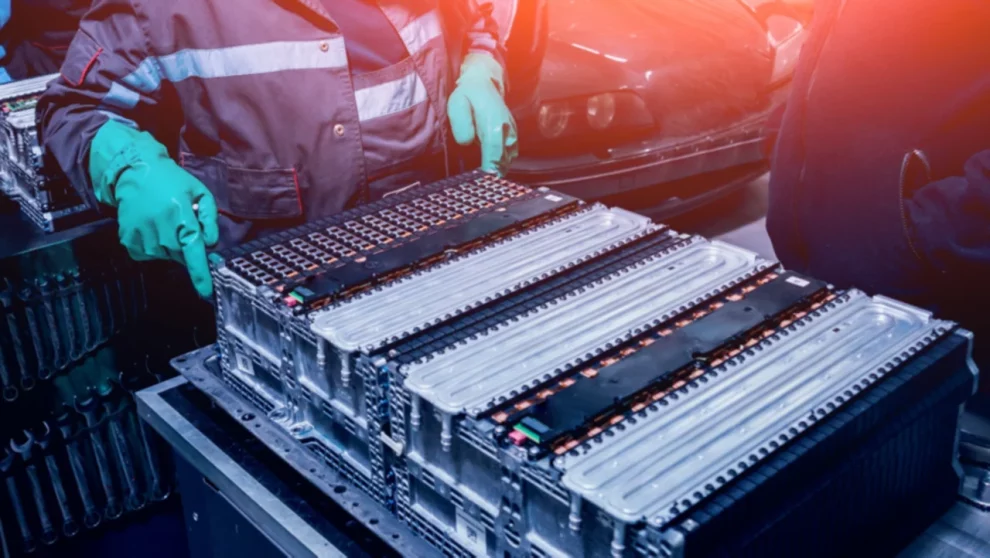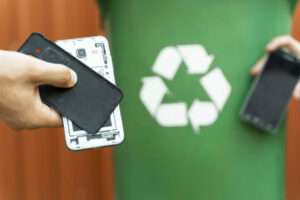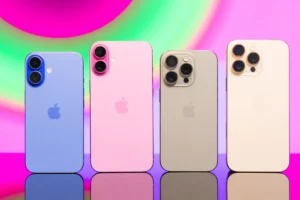Lithium-ion (Li-ion) batteries power most of our portable electronics today. From smartphones and laptops to power tools and electric vehicles (EVs), these high-performance batteries have become an integral part of our modern, wireless world. However, with this convenience comes a responsibility – the duty to properly recycle batteries at the end of their useful life.
Why does lithium battery recycling matter? What hazards do these batteries pose? And how should you actually go about recycling them?
This guide covers everything you need to know about responsible lithium-ion battery recycling and disposal.

The Importance of Recycling Lithium-Ion Batteries
There are three key reasons why recycling lithium batteries is essential:
1. Environmental Impact
Li-ion batteries contain toxic heavy metals like nickel, manganese, and cobalt. If not recycled, these metals can leach into the environment when batteries wind up in landfills. This leads to contamination of soil and waterways, harming ecosystems.
Recycling allows these scarce materials to be recovered and reused in new batteries. This reduces the need for additional virgin mining – protecting natural habitats and reducing environmental degradation.
2. Safety and Fire Risk
Improperly discarded lithium batteries often end up crushed or damaged. This can trigger dangerous fires or explosions when exposed to water or high heat – putting waste management workers at risk.
Recycling facilities utilize specialized techniques to safely handle lithium batteries without fire risk.
3. Resource Conservation
With surging sales of consumer electronics and rapid growth expected in EVs, global demand for lithium batteries is accelerating exponentially. Recycling reduces the need for continued virgin mining, promoting resource sustainability.
Extracting raw battery materials like lithium and cobalt requires huge amounts of water, land, and energy. Recycling allows these constrained resources to go further – powering more devices with fewer environmental impacts from mining.
Hazards of Improper Lithium Battery Disposal
Before explaining how to properly recycle them, it’s important to understand why lithium batteries require special handling and absolutely should not go in the trash.
Fire and Explosion Risk
As touched upon earlier, damaged or improperly discarded lithium batteries carry serious fire and explosion risks. The flammable electrolyte fluid they contain can ignite when exposed to oxygen, sparks, extreme heat, or mechanical damage.
In fact, the United States Fire Administration warns that fires from lithium cell failures have caused a number of serious injuries and structure fires. They caution the public never to store loose batteries together that could short circuit each other.
Environmental Contamination
While extremely useful, lithium batteries contain a number of heavy metals and toxic chemicals like:
- Lithium
- Cobalt
- Nickel
- Manganese
- Copper
- Aluminum
- Cathode compounds
- Carbonates
When batteries wind up crushed in landfills, these substances can leach into soil and groundwater – accumulating to hazardous levels. Studies, like this 2019 report, have detected elevated lithium contamination from electronics recycling sites.
Over time, such localized contamination poses risks to the health of surrounding ecosystems and communities.
How to Properly Dispose of Lithium Batteries
Clearly, improperly discarded lithium batteries create both safety issues and environmental hazards. So how should you responsibly recycle them?
1. NEVER Throw Lithium Batteries in Trash or Recycling
First and foremost, it’s imperative that lithium batteries never wind up in your household trash or curbside recycling bin. As discussed, both waste disposal streams are unequipped to safely handle lithium batteries.
2. Identify Your Battery Types
There are a few different kinds of lithium batteries in devices today. The most common types are:
- Lithium-ion (Li-ion): Used in most consumer electronics like phones, tablets, and laptops.
- Lithium polymer (or LiPo): Found in smaller portable electronics like headphones and some wearables.
- Lithium iron phosphate (LFP): Utilized in electric vehicles and power tools.
Identifying your exact battery chemistry isn’t critical for recycling. However, understanding if they contain lithium is important for proper handling.
Check any labels on the batteries themselves for details. Alternatively, consult your device manuals for technical specifications listing the battery types used.
3. Locate Nearby Recycling Options
Once you’ve confirmed you’re dealing with lithium batteries, it’s time to find responsible recycling solutions in your region. There are a few options to be aware of…
Battery Recycling Locations
Call2Recycle offers a network of drop-off points across the United States and Canada that accept all lithium battery types. Use their site to find the nearest recycling location.
Big retailers like Best Buy and Home Depot also collect lithium batteries for recycling. Check for drop-off boxes at your local stores.
Hazardous Waste Collection
Many municipal household hazardous waste facilities accept lithium batteries. Others run periodic battery recycling events. Check your local waste management website for details.
Mail-Back Programs
If there are no convenient drop-off locations nearby, you can utilize lithium battery mail-back programs. Retailers like Battery Solutions offer prepaid recycling kits you fill and send off.
4. Prepare and Secure Batteries
Proper transportation and handling is key for safe lithium battery recycling. Follow these tips:
- If possible, remove batteries from devices for easier recycling.
- Place each battery individually in a sealed plastic bag or non-conductive tape to avoid contact.
- Secure loose batteries upright in a sturdy container during transport like a cardboard box or plastic tub.
- Ensure batteries won’t be crushed or punctured on the way to your drop-off.
5. Safely Drop Off Batteries
The final step is delivering your packaged lithium batteries to a designated recycling location. Follow all instructions from staff for handling and paperwork.
Some key tips:
- Notify staff you have lithium batteries to recycle.
- Carefully place sealed batteries in collection containers as directed.
- Never leave loose lithium batteries unattended or unsupervised.
And that’s it! With just a few simple steps, you’ve safely and responsibly recycled hazardous lithium batteries.
Recycling EV Lithium-Ion Batteries
Electric vehicle batteries represent their own unique recycling challenge compared to consumer electronics cells. Weighing hundreds of pounds, they require heavy machinery to handle.
Thankfully, many automakers and third party companies offer robust EV battery recycling programs today. Here’s what to know about recycling EV lithium batteries.
Why Recycle EV Batteries?
Electric cars utilize large battery packs containing thousands of lithium cells. The Tesla Model 3 pack for example holds over 7,000 cells!
As EV adoption grows exponentially in the coming decades, millions of these big battery packs will eventually need proper handling at end-of-life.
Detailed forecasts, like this in-depth EV analysis, show lithium demand skyrocketing in tandem to over 4 million tonnes by 2040.
Recycling EV lithium batteries will be crucial to supply these vast future resources needs while minimizing further environmental impacts from mining.
How to Recycle an EV Battery
When your electric car does eventually reach end-of-life, follow these steps for responsible battery recycling:
- Check Manufacturer Guidance: Refer to the battery handling details in your EV owner’s manual. Most automakers provide battery return instructions.
- Contact Dealer Networks: Connect with your selling EV dealer regarding trade-in and battery return programs available.
- Utilize Direct Automaker Recycling: Many top EV brands have established direct battery take-back initiatives like Tesla and Nissan.
- Leverage Third-Party Programs: Specialty recycling firms like Li-Cycle offer large-scale lithium battery recycling services automakers utilize.
The key is verifying your EV brand provides clear battery recycling options at purchase. Responsible ones realize end-of-life processes are essential for EV adoption.
The Future of EV Battery Recycling
Automakers continue investing heavily in battery reuse and recycling innovations as EV volumes grow. For example, Redwood Materials, founded by former Tesla CTO JB Straubel, operates an extensive closed-loop EV battery recycling facility in Nevada.
They already recapture over 95% of raw materials from spent EV batteries for reuse in new cells. Straubel envisions expanding these recycling capabilities globally to supply soaring future lithium demands.
Such next-gen EV battery recycling efforts will be instrumental in responsible resource management as electric mobility transformations continue worldwide.
The Role of Responsible Recycling
Hopefully by this point, it’s clear why properly recycling lithium batteries matters – from the tiny cells powering your devices to massives packs driving EVs.
These modern marvels enable so much technology we appreciate. But their very utility relies on the responsible recovery and reuse of finite resources.
Recycling lithium batteries properly closes the loop – allowing constrained elements like lithium, cobalt, and nickel to supply endless generations of electronics and e-mobility innovation to come. But this only happens if we consumers make the effort to responsibly return depleted batteries to dedicated recycling streams.
So do your small part for a sustainable future. Follow the guidance above to keep spent lithium batteries out of landfills for good.
















Add Comment